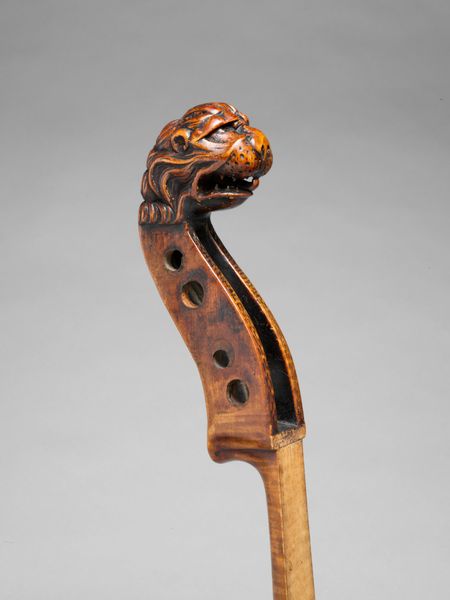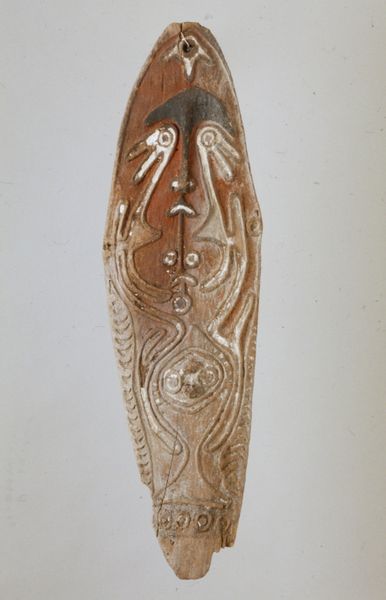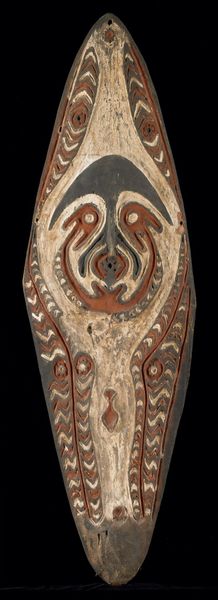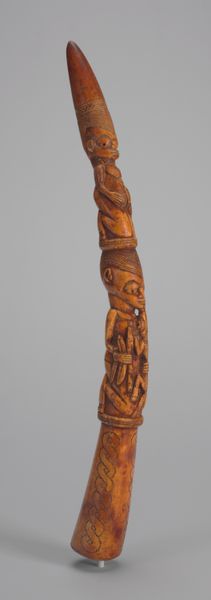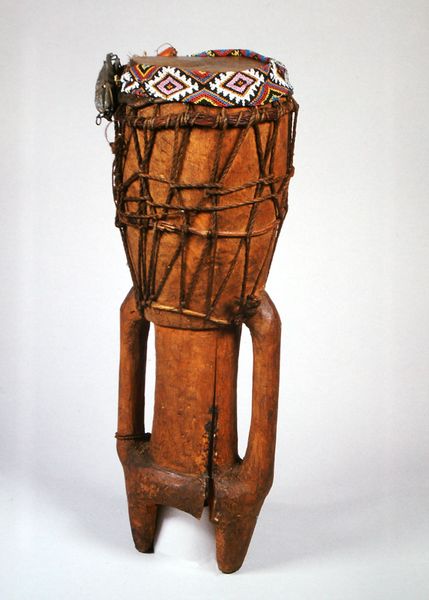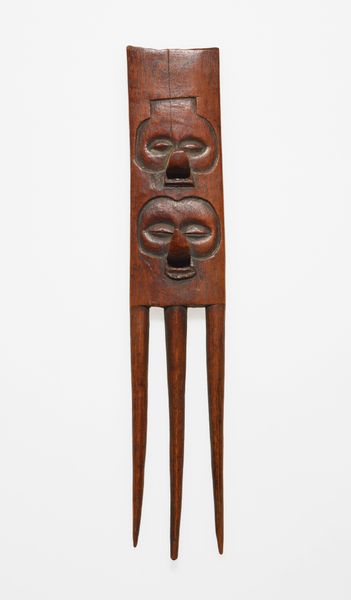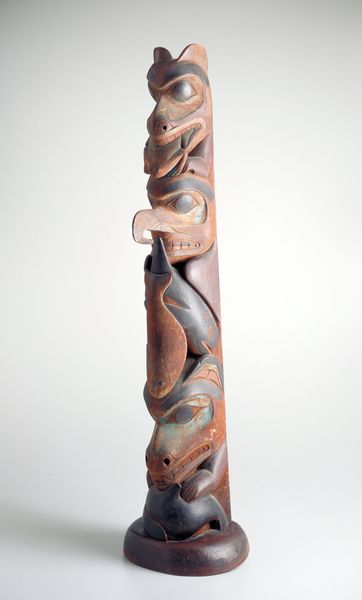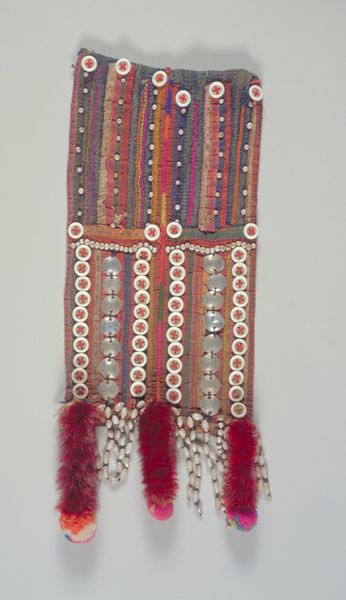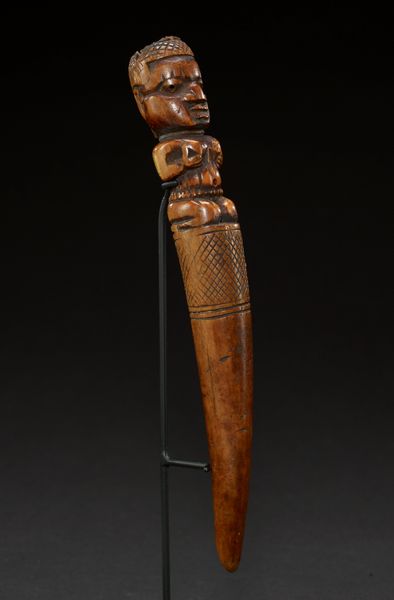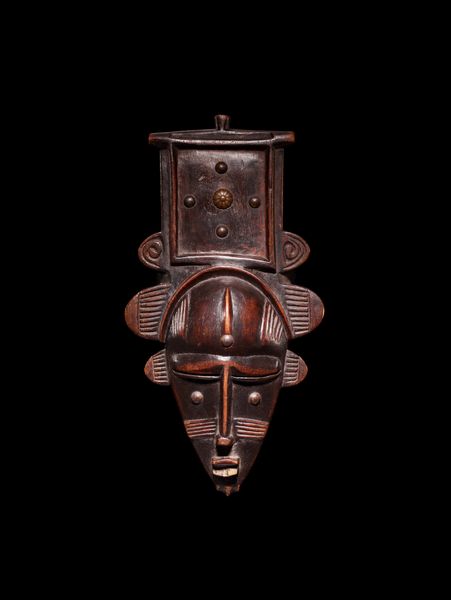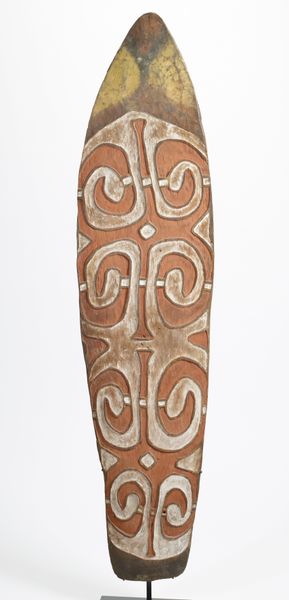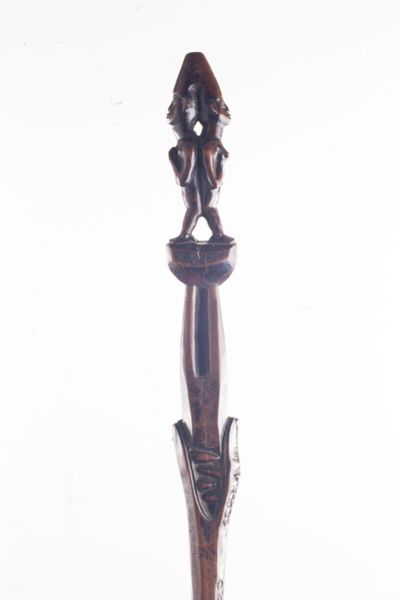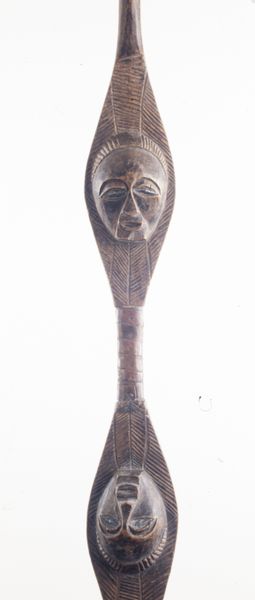
carving, sculpture, wood
#
carving
#
sculpture
#
asian-art
#
figuration
#
geometric
#
sculpture
#
ceramic
#
wood
#
decorative-art
Dimensions: 1/16 x 7 3/4 x 3 3/8 in. (0.16 x 19.69 x 8.57 cm)
Copyright: Public Domain
Editor: Here we have an object called "Spatula," likely dating from the 20th century. The museum attributes it to an anonymous artist, and it appears to be made of carved wood. It looks very ornamental. I wonder, Curator, what social meaning could be attributed to a carved wooden object like this? Curator: It's tempting to read this piece outside of its original social and cultural context, isn't it? But the decorative, almost totemic quality, might indicate a ritualistic function beyond a simple tool. Think about how objects are used in specific rituals within communities; the material, the carving—it all conveys symbolic information and perhaps reinforces social structures. Are there other similar artifacts from the same region and time period? That's a useful starting point to avoid a Western lens being overlaid here. Editor: So, its aesthetic qualities, like the geometric patterns and stylized face at the top, might not just be for show? Curator: Precisely. Consider how museums themselves shape our understanding of these objects. Is "Spatula" even the right name? Who decided that? What stories get prioritized, and which ones are lost in translation? If this object were unearthed, say, today, its fate hinges on what social narrative we assign to it. It’s up to museum practices, really. What purpose did you imagine when you first saw the name "spatula?" Editor: Honestly, I just thought it was for cooking! I’m starting to realize how much I’m projecting my own assumptions. So much more to think about. Curator: Indeed. Every object, even something as seemingly simple as a spatula, has the potential to tell us a lot about the society that created it – and about the society that *interprets* it. The politics of display, always an influencing factor.
Comments
minneapolisinstituteofart almost 2 years ago
⋮
Betel chewing is a common practice throughout India, Indonesia, and Oceania. Frequently called betel nut, a "chew" actually consists of three components; a paste made from the crushed kernel of an areca palm nut, the fruit or leaf of the betel-pepper plant, and a quantity of powdered lime, obtained from burnt coral or shell. Often this combination takes the form of a small bite-sized package which is placed in the cheek and chewed in a manner similar to chewing tobacco. Betel chewing is a social and personal habit, but betel is also chewed in ritual and ceremonial contexts. The use of betel in Oceania has led to the manufacture of finely decorated paraphernalia including lime containers, lime spatulas, and mortars. These objects have been considered among the finest of Melanesian carvings.
Join the conversation
Join millions of artists and users on Artera today and experience the ultimate creative platform.
